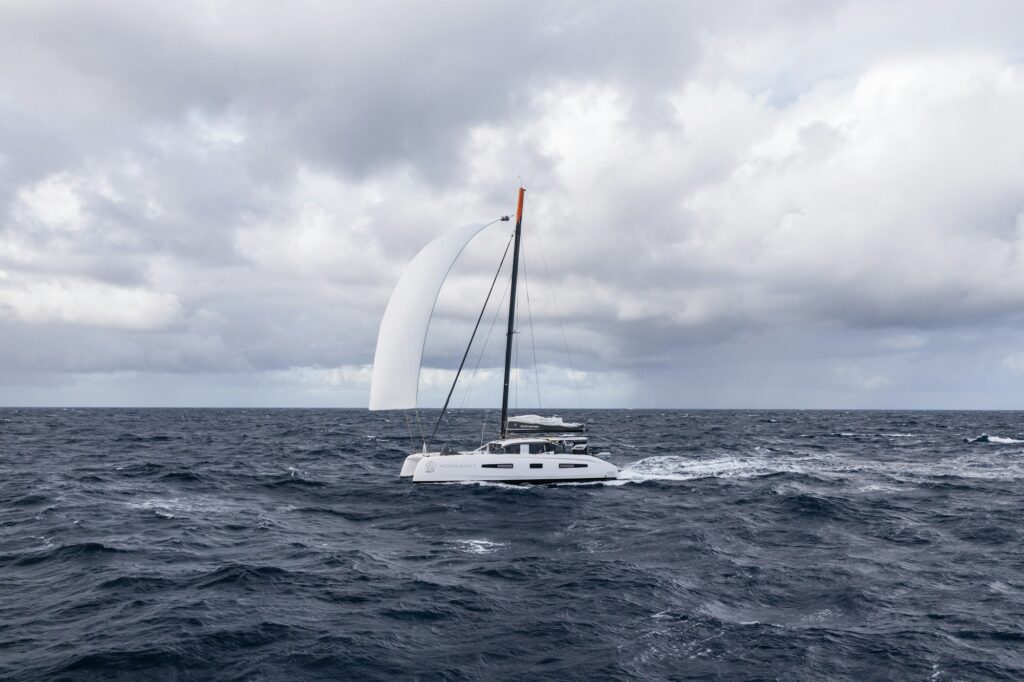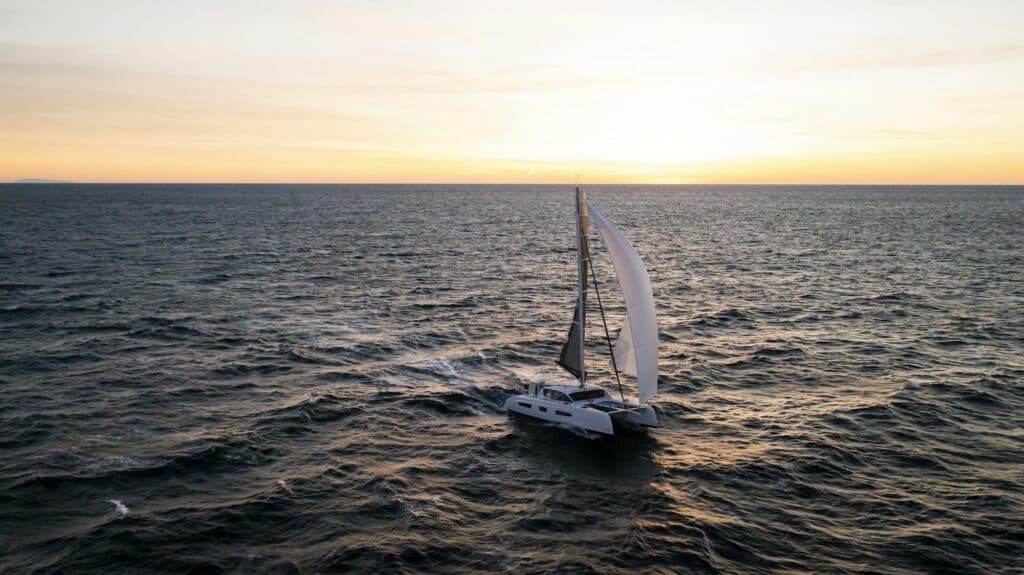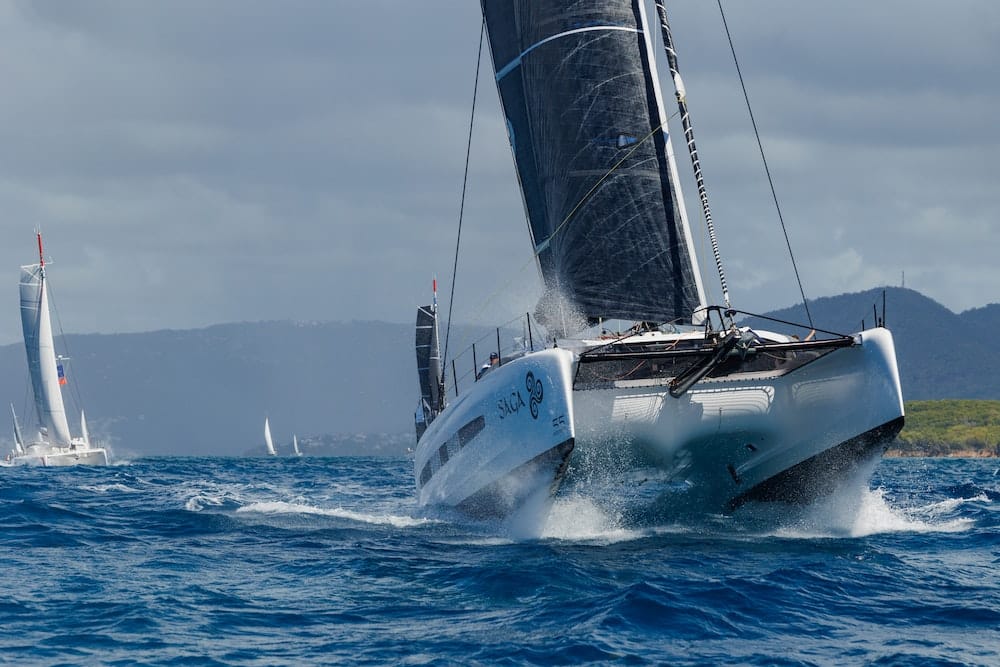
Author : Nikki Henderson
When I asked the Outremer Ladies’ community for suggestions on webinar topics, ‘Daggerboards’ was top of the list. I wasn’t surprised. I don’t think I’ve had a day out on an Outremer with prospective or current owners where daggerboards were not discussed.
It makes sense that there is a curiosity about daggerboards; using them properly is essential if you want your Outremer to perform. What is interesting though, is how confusing people find them.
One thing I’ve realised is that for some people, the issue is similar to my relationship with electronics (hate) and engineering (love). Things I cannot physically see are inherently cloaked in mystery and much more challenging for me to understand. This can be the case with daggerboards: they are hidden underwater and so are often forgotten or misunderstood.
The other reason that daggerboards can be confusing is that they affect not just the performance of a catamaran, but also the safety. Sometimes the theories contradict each other and lead to conflicting advice as to the right and wrong way to use them. In fact, there is no one ‘rule’ about daggerboards. The key, as with anything on a boat, is to understand the reasoning behind the basic daggerboard practices, so that you can make your own decision based on your own unique circumstances that you encounter at any particular time.
I hope this blog will help you build this critical foundation of understanding so that you can set sail safely and with confidence. Daggerboards – like sail trim – is a subject of continual learning. See this as step 1 in the life-long journey.
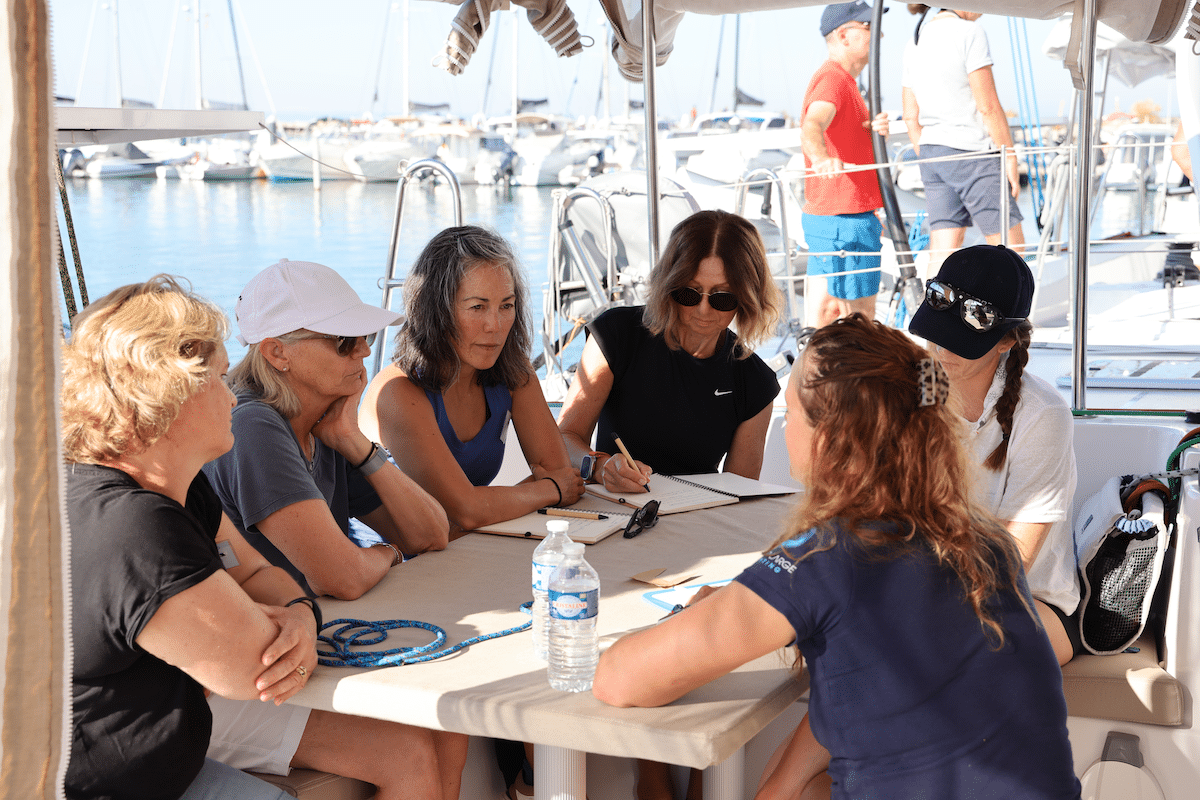
Catamaran daggerboards: how should they be adjusted for optimum sailing?
Daggerboards are best thought of as an ‘underwater sail’ – sometimes called a ‘foil’. Just as a sail above the water needs trimming – so does the sail under the water. But unlike the sail above the water, the daggerboard only has one trim option: how much of it is exposed below the hull.
When sailing upwind the daggerboards provide resistance and lift under the water to balance out the sideways effort force from the sail above the water. In more simple terms, daggerboards help the boat move forward rather than sideways when sailing upwind. Therefore, when sailing upwind, the assumed best practice is to have the daggerboards down. [UP-wind = DOWN-board]
When sailing downwind, the effort force from the sail works almost entirely in the direction you need the boat to go. Therefore, you do not need the resistance under the water from the daggerboard to help with the direction. In fact, it will probably hinder you from sailing deep downwind and slow you down. Therefore, when sailing downwind, the assumed best practice is to have the daggerboards up. [DOWN-wind = UP-board]
Generally, when sailing with wind on the beam – a good ‘go-to’ trim set up is one that is somewhere in the middle of downwind and upwind trim. Therefore, a good starting point for a beam reach would be to lift the daggerboards half-way up.
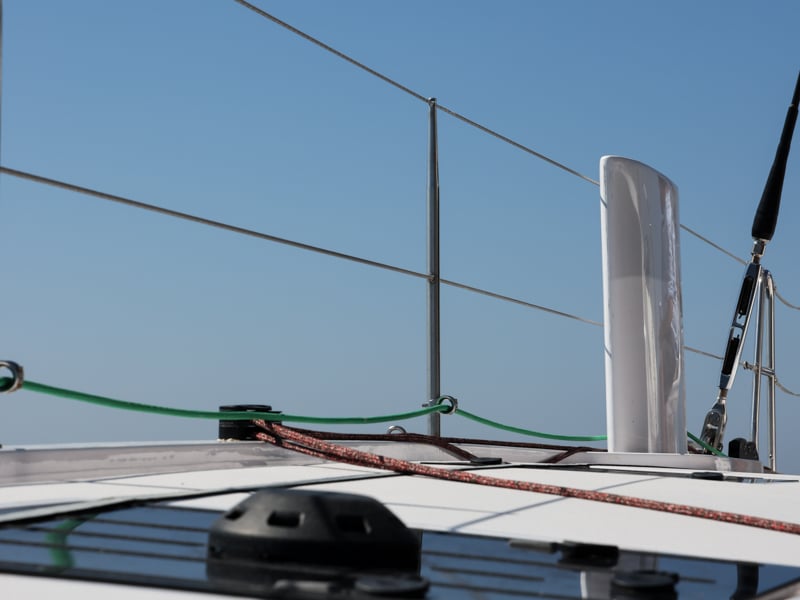
Which catamaran daggerboard for which sailing conditions?
For any competent dinghy sailors who understand daggerboards, this is the most common question as they are typically used to using only one!
An important key principle, is that a daggerboard is only effective when it is submerged in the water. Therefore, if you were sailing the boat purely for performance in a flat sea, you would always need to be trimming at least the leeward one. If the windward hull lifts slightly here and there (which it does fractionally in any substantial wind) then the windward daggerboard is not working efficiently.
Do you drop the windward board? In relation to performance, this depends on how much underwater resistance you need.
In very light winds, the standard practice is to lift the windward daggerboard all the way and only trim the leeward board. When both daggerboards are down, (for simplicity) there is now double the ‘underwater sail’ area. This would likely imbalance how much power there is from the light winds on the sail above the water, and literally ‘drag’ the boat and slow her down.
As the winds increase, there may be a time where you feel you want more underwater resistance, and you could consider lowering the windward board as well. You might find your course over ground improves. Then it was a good decision. If your speed decreases, it might be creating too much drag and you should lift it back up.
If the wind continues to increase further, it is likely you will choose to reef the main. If we return to the concept of the daggerboard being the ‘underwater sail’, if you reef the main, then consider reefing the daggerboard and lifting some up slightly with each reef you put in upwind to keep the boat balanced.
You may be wondering how such a tiny thing as a daggerboard could balance out the enormous sail area of a main sail. The answer here is that water is a much denser fluid than air, and so the daggerboard needs much less area to create the same force than it would do if it were in air.
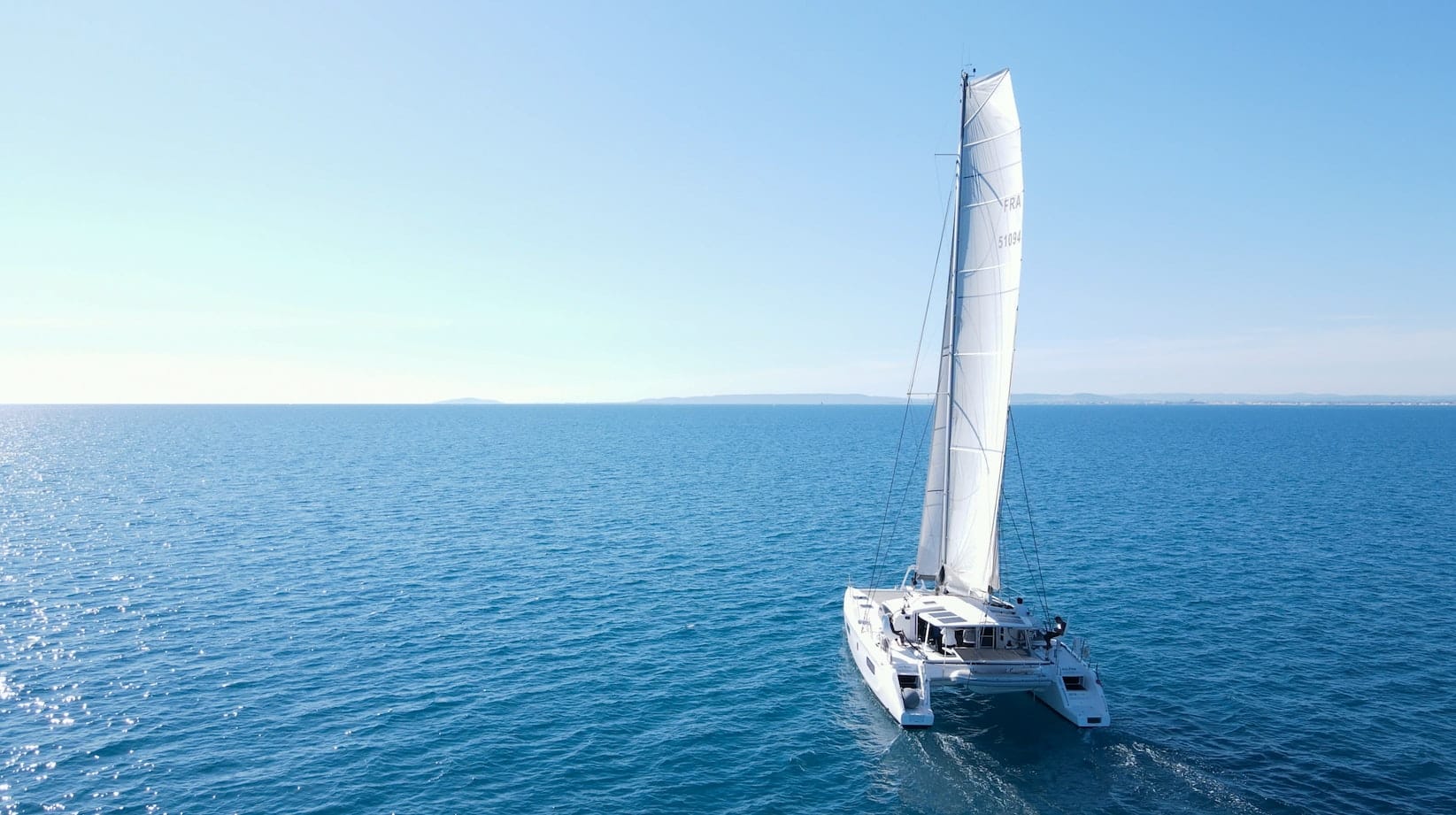
Safety at sea: adjusting daggerboards to avoid risks
This is where things start to get a little confusing.
The leeward daggerboard being down will increase the risk of ‘tripping up’. Therefore, in any significant sea state – or possible impending increase in wind/seastate such as if you are close to a mountainous shore line – where you feel that the hull is, or may, lift a lot, it is in fact safer to lift the leeward daggerboard and only use the windward one. Be aware that you will see a drop in performance as this contradicts the performance best practice of trimming the leeward board and not the windward.
The safest option entirely in very large sea states where the sea is actually tilting the boat significantly from side to side as she rolls down waves is to lift both daggerboards, so you float along waves like a raft.
‘Tripping up’ is a phrase used a lot and in fact sometimes misunderstood. To explain what it means: if there is wind/waves coming from the side of the boat and the windward hull lifts slightly in a wave, or there is a gust and the sail powers the boat forward – the leeward hull can ‘dig in’ to a wave and trip the boat up. The best way to imagine this is imagine getting one of your shoelaces on one of your feet stuck but the rest of your body is still walking. You will fall over. Same with the boat.
A converse argument to lifting the daggerboards up, is that dropping both of them will protect the underside of the boat – from grounding, or from hitting a submerged object. Having both daggerboards partially down can protect the propellor. Having them at ‘deck level’ can protect the rudder. In other words, if you hit something then it will hit the daggerboard before the more fragile underwater equipment.
Another argument against lifting the daggerboards entirely, is that with no daggerboards, your rudder is doing all the ‘resistance-work’. It is hard to believe, but it also acts as a very tiny underwater sail too. There will be a huge load on the rudder with no daggerboard at all and this risk is probably not worth the gain in speed on a long downwind ocean crossing. One way to spot if the rudder is working too hard is just look at your autopilot rudder angle – if it’s maxing out and having to work very hard to keep the boat going straight then you probably have too much sideways slip. It’s a bit like the boat is sailing on an ice rink. In that case, I’d recommend putting both of them down a touch. This will benefit both the ruder and the autopilot (therefore power consumption).
(Read our Safe Sailing article to learn more about safety on board)
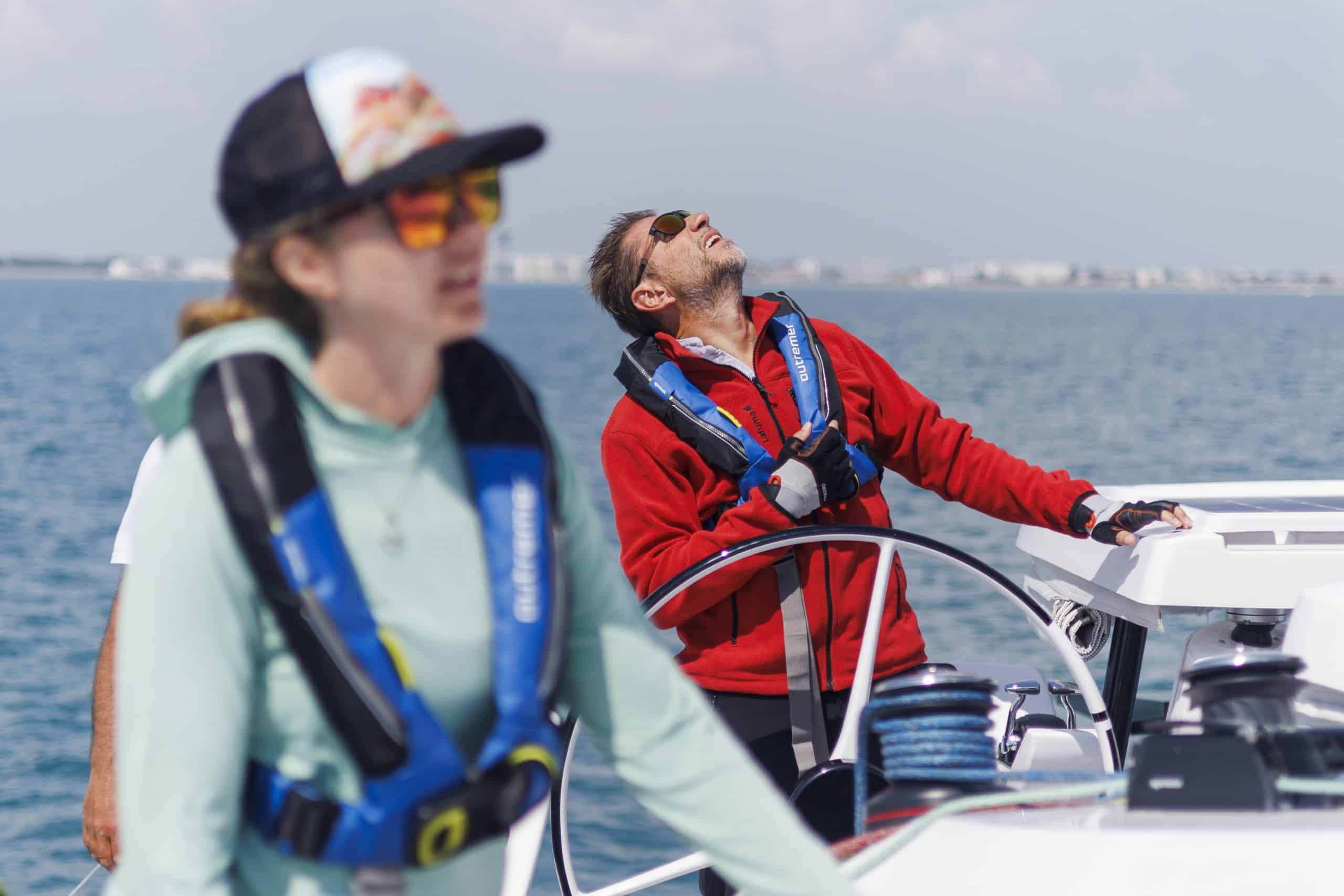
Conclusion
Using daggerboards is a balancing act! Boat weight, weight distribution, sail area, wind strength, sea state, sail trim are all things that effect the decision for how to use the daggerboards: how much daggerboard to use and which one (or both) to use. This is why it’s not an exact ‘one size fits all’ rule and anyone who tells you so is probably oversimplifying it which could lead to a dangerous sitaution. But start using them and see how the boat feels. The beauty of buying an Outremer is that if you keep her lightweight and trimmed well, then she will talk to you and tell you what feels good. Don’t believe me? Try sailing a brand-new Outremer out of the factory before she has anything on – then compare it to one with four peoples’ life belongings on – and you will see what I mean. 😉

